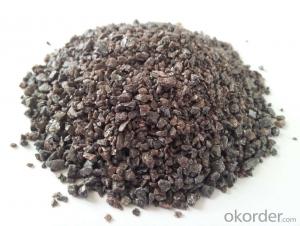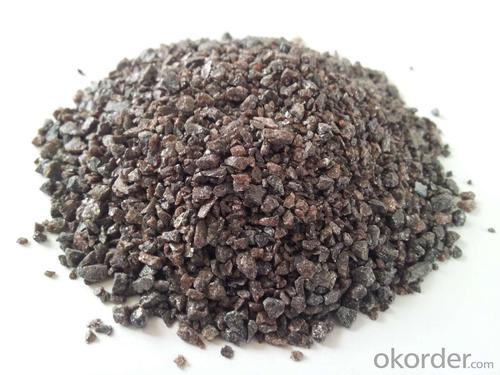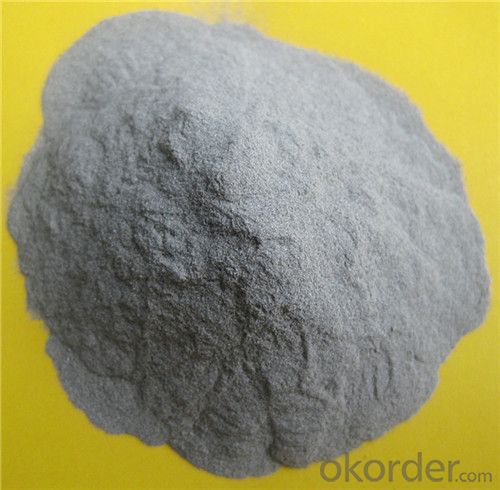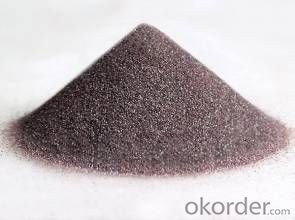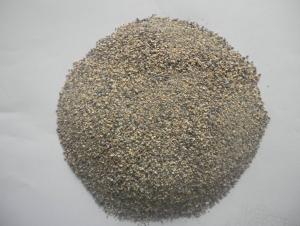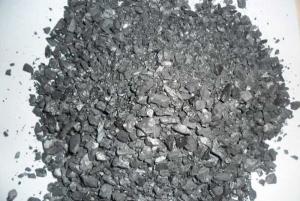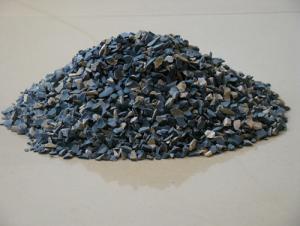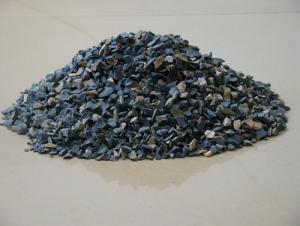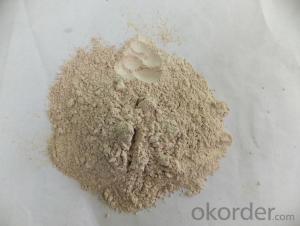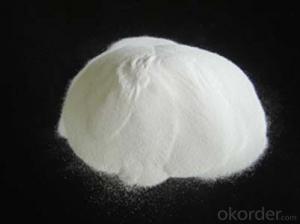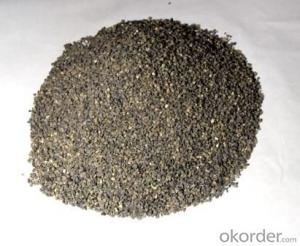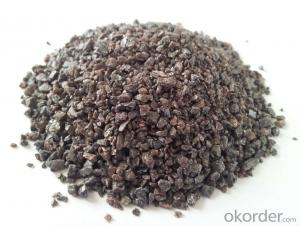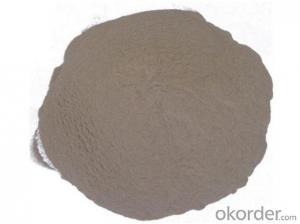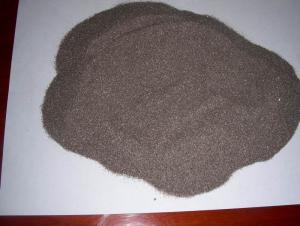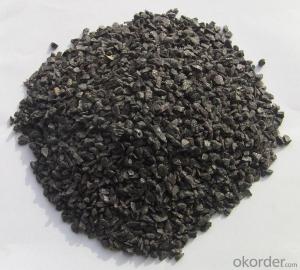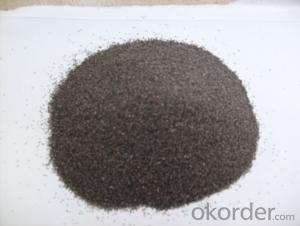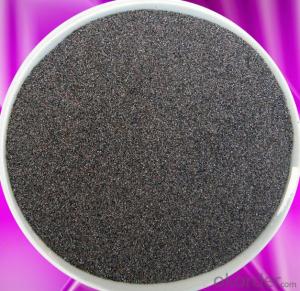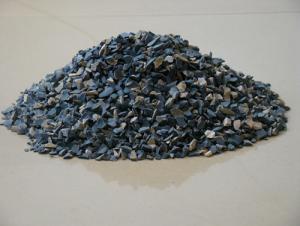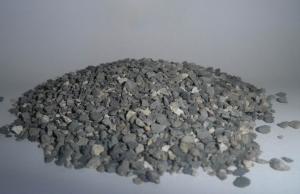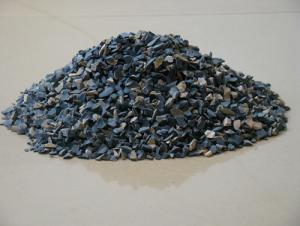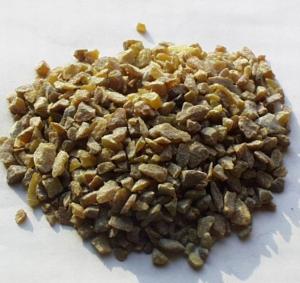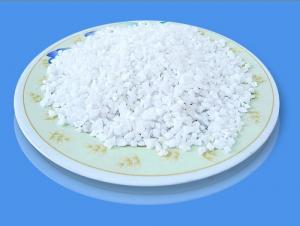Raw Materials for Refractory - Brown Fused Alumina for Refractory, BFA Sands, Abrasives
- Loading Port:
- Qingdao
- Payment Terms:
- TT or LC
- Min Order Qty:
- 25 m.t.
- Supply Capability:
- 3000 m.t./month
OKorder Service Pledge
OKorder Financial Service
You Might Also Like
Brown Fused Alumina for Refractory, BFA sands, Abrasives
is fused and crystallized under high temperature from a mixture of bauxite and other and other raw materials. It is characterized by its high hardness,good toughness and shape in size. Abrasives tools made of it are suitable for grinding metals of high-tensile strength such as: carbon steel,general-purpose alloy steel,annealed malleable iron and hard broze,etc.It also can be used as refractory materials
Physical and chemical analysis for brown fused alumina:
Purpose | Specification | Chemical composition(%) | Magnetic material content(%) | ||||||||||
Al2O3 | Fe2O3 | SiO2 | TiO2 | ||||||||||
Abrasive Grade | F | 4#—80# | 95.0 Min | 0.3 Max | 1.5 Max | 3.0 Max | 0.05 Max | ||||||
90#—150# | 94.0 Min | 0.03 Max | |||||||||||
180#—240# | 93.0 Min | 0.3 Max | 1.5 Max | 3.5 Max | 0.02 Max | ||||||||
P | 8#—80# | 95.0 Min | 0.2 Max | 1.2 Max | 3.0 Max | 0.05 Max | |||||||
100#—150# | 94.0 Min | 0.03 Max | |||||||||||
180#—220# | 93.0 Min | 0.3 Max | 1.5 Max | 3.5 Max | 0.02 Max | ||||||||
F230-F1200 | 92.5 Min | 0.5 Max | 1.8 Max | 4.0 Max | — | ||||||||
Application
1. it are suitable for grinding high-speed,high carbon steel
2.high-grade refractory materials
3.abrasives tool
4.grinding and polishing
5.ceramics
6.LED
7.sandblasting
8.aviation
Pictures:
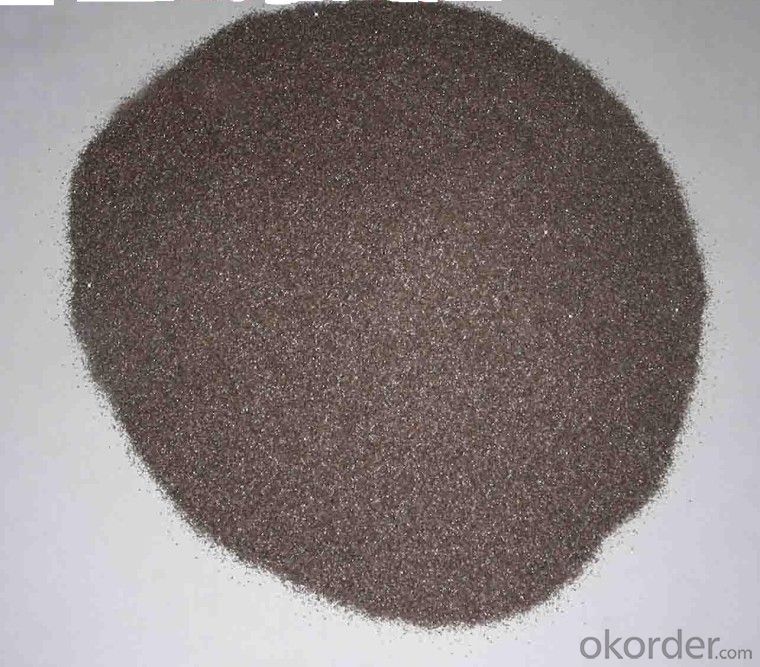
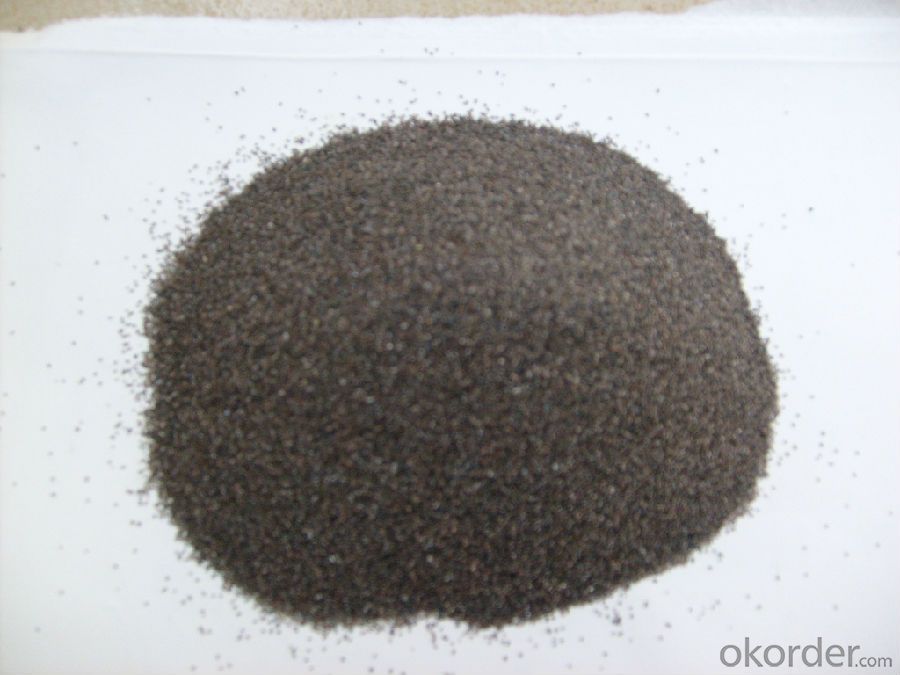
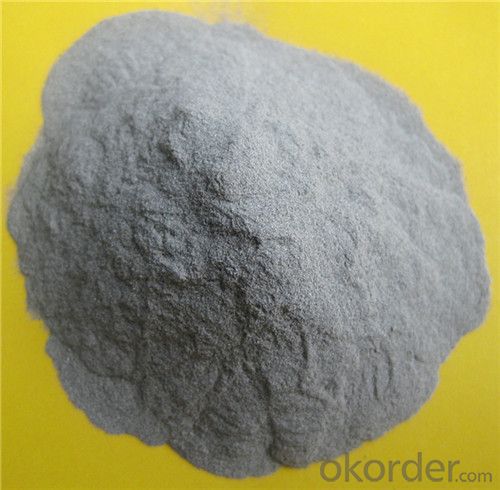
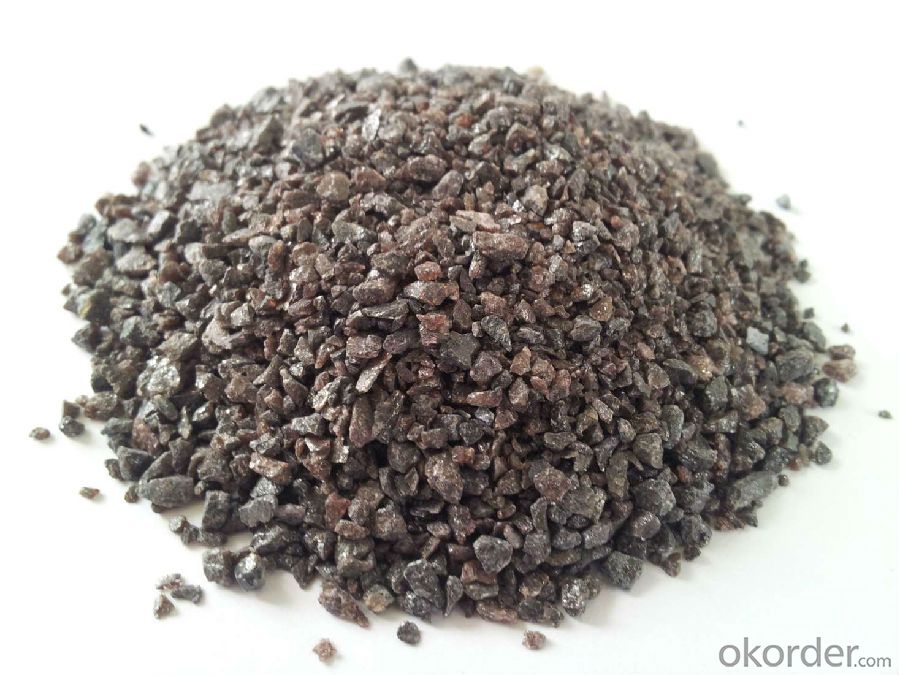
If you’ve any enquiries, please don’t hesitate to let us know.
- Q: What are included in wall fireproofing material?
- External wall thermal insulation materials are divided into A and B according to combustion level. Grade A is incombustible material, while grade B is combustible material. A few years ago, fires in CCTV building and Shenyang hotel resulted from grade B material. Currently grade A is usually used, and some are even cheaper than the grade B material. Grade A is roughly divided into insulation mortar, phenolic board, rock wool board, foam cement board, etc. Insulation mortar is quite good. It is easy and convenient to construct, has low cost, but the production is too simple and it is easy to fake.
- Q: What are the applications of refractory?
- Refractory materials are widely used in iron and steel smelting , glass, cement kilns, non-ferrous metal metallurgy, environmental protection, and chemical, etc. For example: For a car of 1.5 tons, do you you know how much refractory it use? The answer is: To produce top hat or other steel products, glass for vehicle windows, nonferrous metals kile aluminum and copper, plastic products of the body all needs refractory. A car of 1.5 tons needs to consume a total of 10Kg refractories.
- Q: How many hours of the fire endurance time of the rock wool laminboard?
- This is depending on the fire rating, about two hours and the better one, 5 hours.
- Q: What dose the fireproof and thermal insulation material include?
- It includes A1: Non-combustible inorganic monomer; A2 Non-flammable organic compound, namely composite material; A3 Modified phenolic fireproof materials.
- Q: Is there vermiculite in refractory?
- In refractory field, vermiculite is usually used as fireproof thermal insulation material.
- Q: How to divided the grade of external wall thermal insulation materials?
- 1, According to China's national standard GB8624-97, combustion performance of building materials will be divided into the following grade level A: Incombustible building material: It is a kind of material that almost does not occur burning. Level B1: Nonflammable building material: Non-flame material has good flame resistance. It is difficult to fire under the condition of open fire in the air or high temperature, and it is not easy to quickly spread, and when the combustion?source is removed, the combustion will stop immediately. Level B2: Combustible?building?materials: Flame material has a good flame resistance. In case of fire in the air or at high temperature, it will immediately burst into flames, and easily lead to the spread of fire, such as wooden column, timber roof truss, timber beam and wooden stairs. Level B3: Combustible?building?materials: It has no any flame resisting effects, and is easy to burn, so the fire risk is high. 2, The external wall thermal insulation materials is divided by fire rating 1) level A combustion performance thermal insulation material Rock wool, glass wool, foam glass, foamed ceramics, foam cement, hole-closed perlite, etc. 2. combustion performance is level B1 insulation materials: Extruded polystyrene board (XPS) after special treatment / Special treatment of polyurethane (PU), phenolic aldehyde and gelatine powder polyphenyl granule 3, combustion performance is level B2 insulation material: Molded polystyrene board (EPS), extruded polystyrene board (XPS), polyurethane (PU), polyethylene (PE), etc. I hope my amswers are helpful to you
- Q: Who knows how many kinds of fireproof insulation materials are there in the market?
- The so-called A-level materials in fire insulation materials, namely, the WW non-combustible insulation materials, and the WW material s are A-level. Inorganic fireproof and thermal insulation materials can be used as wall insulation materials to replace red bricks, therefore, they, as thermal and cold insulation materials, can reduce the thickness of walls, and save energy, as well as expand applicable areas indirectly, decreased structure weight. They are very good.
- Q: Which one is better, fire-resistant wood or steel?
- Rebar would weaken and quickly collapse in the fire, and the fire resistance of a heavy log is much better than steel. In many ways, the fire resistance of a large log is equal to reinforced concrete. The heat transfer capacity of wood is 400 times smaller than steel, 8.5 times smaller than concrete. When burning, wood will form a layer of carbon in the surface, and as long as the cross-section of the timber is over a certain size, this layer of carbon it will become an excellent flame retardant layer to protect the interior of the wood from burning. So the United States and Japan and other European countries allow and encourage the use of wood structure with a large section (beam column of 8 inches or more) to construct public buildings without the need for fire treatment applied to wood surface. I hope my answer will be helpful to you.
- Q: Does anyone know what is the use of waste refractory materials?
- Waste refractory materials can be 1, Recycled to do the aggregate and powder of castable , or make bricks. 2, can be reused after smash.3, Metal silicon is an anti oxidant in refractory material, mainly functioning as he oxidation resistance, at the same time improve its toughness.
- Q: What can red stone refractory do?
- In severe cases, the resistance to high temperature without softening down the Celsius temperature. Refractory materials are widely used in metallurgy, chemical, petroleum, machinery manufacturing, silicate, power and other industrial fields, the largest amount of metallurgical industry, accounting for 50% ~ 60% of the total output. Chinese use less impurity clay in more than 4000 years ago, firing pottery, and have been able to cast bronze. In the Eastern Han Dynasty (AD 25 ~ 220) have been used to make clay refractory kiln firing porcelain material and sagger. At the beginning of twentieth Century, the development of refractories to high purity, high density and ultra high temperature products, while developing completely without firing, small consumption of unshaped refractory materials and high refractory fiber (160 for industrial furnace refractories above 0 DEG C). The former, such as alumina refractory concrete, is often used in large chemical plants, ammonia synthesis plant, two - stage reformer furnace wall, the effect is good. Since 50s, the rapid development of atomic energy and space technology, the development of new energy technology, requires the use of special refractory material of high temperature resistance, corrosion resistance, thermal shock resistance, erosion has excellent properties, such as melting point above 2000 DEG C, oxide refractory compounds and high temperature composite refractory materials.
Send your message to us
Raw Materials for Refractory - Brown Fused Alumina for Refractory, BFA Sands, Abrasives
- Loading Port:
- Qingdao
- Payment Terms:
- TT or LC
- Min Order Qty:
- 25 m.t.
- Supply Capability:
- 3000 m.t./month
OKorder Service Pledge
OKorder Financial Service
Similar products
Hot products
Hot Searches
Related keywords
